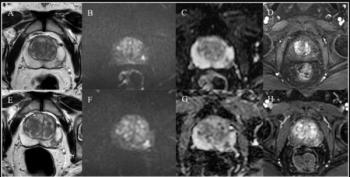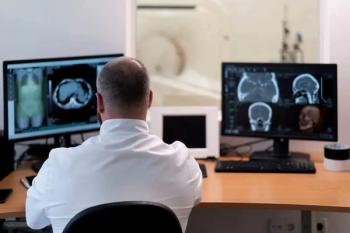
Innovation in Neuroimaging: Unlocking the Mysteries of the Brain
Emerging technology gives radiologists an unprecedented view of the brain.
For centuries, the inner workings of the human brain have eluded the world’s scientists and physicians. Now, advances in neuroimaging techniques can address previously unanswered questions about how the brain functions and how distressing and costly diseases such as Alzheimer’s and Parkinson’s develop and progress. Innovations in diagnostic imaging, such as computed tomography (CT), positron emission tomography (PET), molecular imaging and the hybrid modality of PET and magnetic resonance (MR), can identify the causes of a stroke, rule out Alzheimer’s and correctly diagnose Parkinson’s. They offer the potential to detect disease and the ability to explore the brain’s frontier. Increasing access to these technologies will improve health and save lives while lowering healthcare costs.
Determining the Causes of a Stroke
Stroke is the fourth leading cause of death in the United States, killing 130,000 people annually, and is a leading cause of disability for those who survive. Today, CT can reveal the cause of stroke, assess its severity and determine whether a patient requires hospitalization. Knowing whether a stroke was caused by a blood clot is crucial, since clot-busting drugs can worsen symptoms - or kill - if a stroke has other causes. Time is also of the essence, given that most stroke patients arrive at the hospital after the “golden hour” - the window of time in which treating a patient for a severe injury most greatly increases the chance of survival. Having a portable CT in the ambulance offers a potential solution to this problem; a randomized clinical
The clinical benefits of CT to patients are measurable and contribute to improved outcomes. We now know that there are economic advantages as well. According to one
Ruling Out Alzheimer’s Disease
More than 5 million Americans have been diagnosed with Alzheimer's disease today, and by 2050, that number could nearly triple. On this trajectory, the direct
For many years, Alzheimer’s has been difficult to distinguish from other common conditions associated with aging. Now, PET imaging can detect the presence of beta amyloid plaque in the brain - a common indication of Alzheimer’s - and help physicians diagnose patients when there is more time for them and their family and caregivers to plan accordingly. The ability to rule out Alzheimer’s through beta amyloid PET imaging could also help physicians avoid prescribing inappropriate or unnecessary treatments.
Alleviating the personal, societal and economic burden of Alzheimer’s is also a priority of the Obama Administration. In his fiscal year 2014 budget, President Obama included a $122 million increase for
Correctly Diagnosing Parkinson’s
Parkinson’s disease, the second most common neurological condition after Alzheimer's, currently affects approximately 1 million people in the United States and
Fortunately, promising advances in molecular imaging will give physicians the capability to correctly diagnose Parkinson’s. For example, a nuclear medicine scan can now help differentiate essential tremor from Parkinson’s and other neurological conditions, a step in the right direction towards alleviating the emotional and economic burden of Parkinson’s on individuals and families affected by this disease.
Exploring the Brain’s Frontier
So, what’s next in brain exploration? For many years, traditional medical imaging modalities were used either to detect anatomic abnormalities or to evaluate an organ’s function in order to diagnose disease. Now, hybrid modalities are combining the power of two imaging technologies into one, providing an even more comprehensive and highly detailed view inside the body. For example, the
These are just a few examples of how advanced medical imaging, including CT, PET, PET/MR and molecular imaging, can lead to appropriate treatments for devastating conditions such as Alzheimer’s, Parkinson’s and stroke. Increasing patients’ access to these scans will improve health outcomes. More dramatically, it will help us see inside the brain and solve mysteries that have proven intractable until now.
Newsletter
Stay at the forefront of radiology with the Diagnostic Imaging newsletter, delivering the latest news, clinical insights, and imaging advancements for today’s radiologists.






























